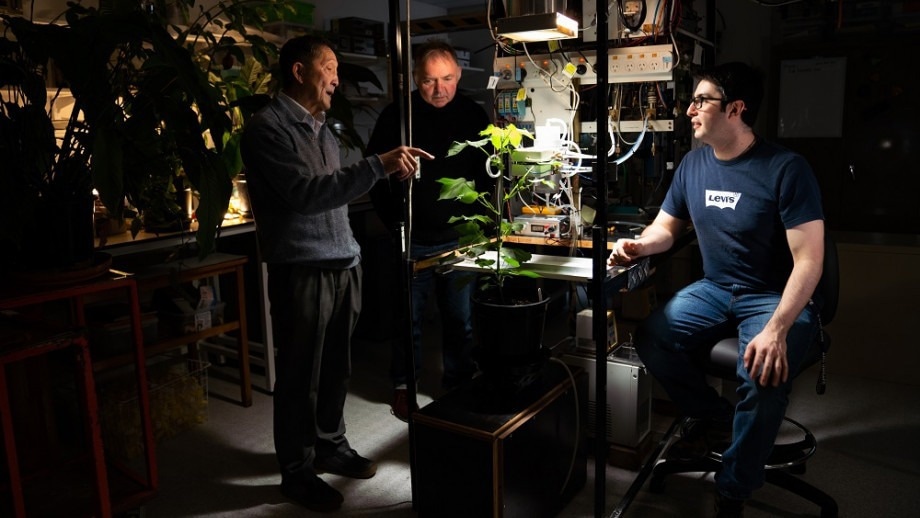Researchers from James Cook University (JCU) and The Australian National University (ANU) have discovered an “exquisite” natural mechanism that helps limit water loss in plants while having a minimal impact on their ability to absorb carbon dioxide (CO2), a process crucial for photosynthesis, plant growth, and crop yield.
 ANU researchers (from left) Dr Chin Wong, Distinguished Professor Graham Farquhar and Dr Diego Marquez. Image Credit: Tracey Nearmy/Australian National University.
ANU researchers (from left) Dr Chin Wong, Distinguished Professor Graham Farquhar and Dr Diego Marquez. Image Credit: Tracey Nearmy/Australian National University.
The discovery, which was spearheaded by Dr. Chin Wong from ANU, is anticipated to assist plant breeders and agricultural experts in creating more water-efficient crops.
The results of the study, according to study co-author Dr. Diego Marquez of the ANU, will have a substantial impact on the agricultural sector and could result in more resilient crops that can endure extreme weather conditions, including drought.
Plants continuously lose water through pores in the ‘skin’ of their leaves. These same pores allow CO2 to enter the leaves and are critical to their survival. For every unit of CO2 gained, plants typically lose hundreds of units of water. This is why plants require a lot of water in order to grow and survive.
Dr. Diego Marquez, Study Co-Author, Australian National University
Dr. Marquez adds, “The mechanism we have demonstrated is activated when the environment is dry, such as on a hot summer day, to allow the plant to reduce water loss with little effect on CO2 uptake.”
The experts believe that by manipulating this water-saving process, it may be possible to develop crops that use less water.
The ANU team’s discoveries are a “dream discovery” from a scientific and agricultural standpoint, said lead author Dr. Wong.
The agriculture industry has long held high hopes for scientists to come up with a way to deliver highly productive crops that use water efficiently. Plant scientists have been dealing with this big question of how to increase CO2 uptake and reduce water loss without negatively affecting yields.
Dr. Suan Chin Wong, Study Lead Author, Australian National University
Dr. Wong says, “Having this mechanism that can reduce water loss with little effect on CO2 uptake presents an opportunity for agricultural scientists and plant breeders researching ways to improve water use efficiency and create drought-tolerant crops.”
Even if the system in place is effective at limiting the amount of water lost from the leaf, the researchers are still unsure of what is causing it.
Our main target now is to identify the structures inside the plant that allow this control. We think that water conduits, called aquaporins, located in the cell membranes are responsible. Once we're able to confirm this, we can then start thinking about how we can manipulate these systems and turn them into an asset for the agricultural industry.
Dr. Diego Marquez, Study Co-Author, Australian National University
“Finding the mechanism itself was one step, a big one, but there is still work to do to translate this discovery into the industry. We expect that both government and industry will see the value of contributing funds to achieve this goal,” says co-author Distinguished Professor Graham Farquhar from ANU.
Dr. Wong originally hinted at this water-preserving mechanism 14 years ago, but it was only recently that the researchers were able to formally establish its presence as a consequence of extensive testing and validation of their findings.
Journal Reference:
Wong, S. C., et al. (2022) Humidity gradients in the air spaces of leaves. Nature Plants. doi.org/10.1038/s41477-022-01202-1.